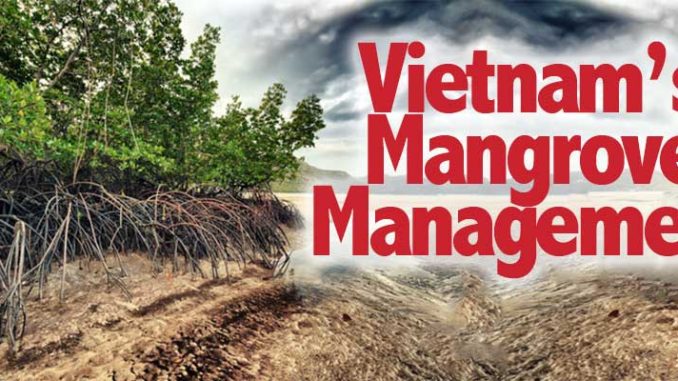
This paper presents a study of the institutional potential for community-based natural resource management (CBNRM) in mangrove forests in Vietnam. CBNRM has attracted international attention and debate, but has not yet been widely implemented in Vietnam. There the main strategies have been centralized management by state agencies and village cooperatives and, since the 1980s, management by individual households. This paper argues that neither nationalization nor privatization has solved the problem of resource degradation and overexploitation. And in many instances, privatization has deprived rural households of their livelihoods.
This is demonstrated in the case study presented here of mangrove management in Giao Lac village, Giao Thuy district, Nam Dinh province. Through most of the colonial period, local practice was to use resources sustainably despite the absence of official regulation. During the cooperative period (1956-1975), the district authority managed mangrove forests in order to protect the central dike. Local people were no longer allowed to use the forest and poaching began for the first time. Doi Moi economic reforms since the 1980s have provided uneven economic opportunities and contributed to habitat destruction. Those with greater access to capital, management skills, and political power have earned more from mangrove-related resources—especially shrimp and clam farming. The poor have benefited the least, while losing access to the very resources they depend to supplement rice farming. As a result of Doi Moi, low income and female-headed households have been particularly marginalized.
This was true even in the context of an international NGO-funded project meant to be pro-environment and pro-poor. This project has helped restore significant mangrove forests in the village environs. But with the project due to end in 2005, planning should begin for a management system that will improve social equity, productivity, and sustainability. A first step would be to enlist the active involvement of existing social and rotating credit associations. Overall, a practical approach is suggested—that the three strategies of nationalization, privatization, and community-based management be combined in Giao Lac village, such that state agencies manage the dike system, households manage individual shrimp ponds, and the whole community protects the mangrove forests in and adjacent to the shrimp ponds.
Le Thi Van Hue
Le Thi Van Hue is a PhD candidate at the Institute of Social Studies, the Hague, the Netherlands. She wishes to thank Dr. Oscar Salemink, Dr. Terry Rambo, and Dr. John Dennis for their advice on the organization of the paper and subsequent review of the manuscript.
Read the full unabridged article HERE
Kyoto Review of Southeast Asia. Issue 2 (October 2002). Disaster and Rehabilitation

